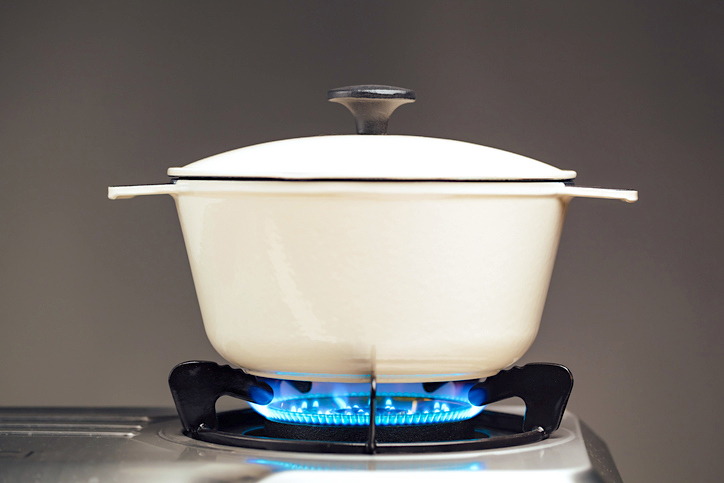Getting to Know Your Gas Stove Flame

Although gas stoves are reliable, the average Georgia gas customer can occasionally run into puzzling issues. For example, the natural gas flame can interact with things in the air with surprising results. These scenarios can sometimes be dangerous. Therefore, it’s important to know what to do if you encounter anything out of the ordinary with your stove. So, let’s find out what your gas stove flame is trying to tell you.
Gas Flame Color
Natural gas stoves burn blue due to the high methane content. A sudden change in this color should alert you to a potential issue with your stove. Most often, the flame will burn orange or yellow instead of blue. So why would this happen?
One reason is high humidity. Whether you are opening the windows on a damp day, or using a humidifier in the house, humidity can turn the flame yellow. This means the gas isn’t burning completely and may give off soot. Natural gas normally contains water vapor when it comes out of the ground at the wellhead. This water can corrode pipes and compressors. So, the gas is dried as it passes through pipeline compressor stations before reaching your home.
According to Maytag, higher calcium or salt content in water vapor can turn the flame orange. Additionally, high potassium can turn the flame pink. If you are running into this problem, you can switch to distilled water in your humidifier for less mineral content. Also, avoid opening windows on damp days.
Although this exact scenario is not particularly dangerous, don’t hesitate to contact Atlanta Gas Light or a gas appliance professional with a concern.
When Flame Color is a Concern
An orange flame on your gas stove can also show not enough air is mixing with the gas. This can lead to the buildup of carbon monoxide, which is toxic. For this reason, turn the burner off right away. One possible cause is blocked burner ports. With the stove off and burners cooled, remove the caps and base to clean them. Look for blockages in the small holes in the burners. If the problem is persistent, you may need to call a gas appliance professional.
Safety Precautions for Gas Stoves
In addition to addressing abnormal flame colors right away, there are other things you can do to make sure you are using your gas stove safely.
- Ventilate your cooking space and turn on hood vent fans when cooking.
- Install a carbon monoxide detector in the kitchen.
- Clean the stove regularly.
- Be sure the stove components are put back into place correctly after cleaning.
For more information about natural gas safety and to shop for the best natural gas plan, visit us at https://www.georgiagassavings.com.
